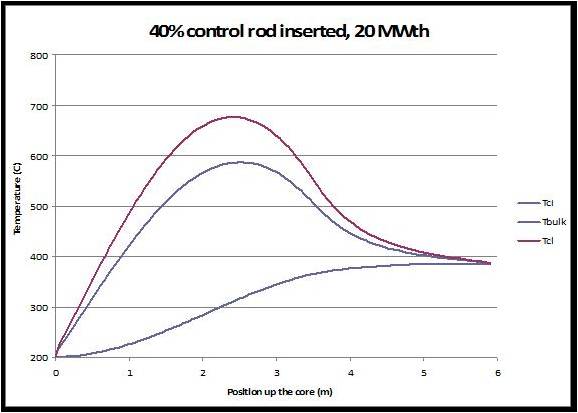Abstract:
This project is designed to show that it is possible to implement safeguards around a program like North Korea’s. The size of the program is small compared to other safeguarded programs, and showing that it is possible to safeguard a program of this size and scope would give diplomatic discussions another route to deal with nations who pursue these programs. This project follows the fuel cycle of the North Korean program from the time Uranium (in the form of yellow cake U3O8) enters the fuel fabrication facility all the way through the reconversion of PuO2 at the Radiochemical Laboratory.
We start by analyzing how much raw material they need to make enough fuel for their lone production reactor, the 5 MWe reactor. The fuel fabrication facility is actually large enough to provide enough fuel for both the 5 MWe reactor and a larger version, the 50 MWe reactor which was partially constructed but never finished. However, because both use natural Uranium as the fuel, the total amount of U-235 will be fairly small compared to domestic fuel fabrication facilities. The 5 MWe reactor requires 50 metric tons of natural Uranium fuel to be run, so that is the amount that we will analyze. We will be looking to see if we can detect a significant quantity of U-235, which is 75 kg according to the IAEA in this form, being diverted for other purposes. To do this, we will calculate the amount that comes in and the amount the goes out and hopefully prove that any material unaccounted for is less that the 75 kg significant quantity threshold.
After the fuel fabrication, the 5 MWe reactor must be analyzed. Two things must be known about the reactor, how much Pu is produced per core load at the stated power level of operation and what is the maximum power they can run the reactor at. It is called the 5 MWe reactor due to its electrical output, but its thermal output is rated at 20 MWth. Using a program called TransLAT, the reactor core will be modeled in 2-d to determine total Plutonium production as a function of burnup. After that, we will need to follow the known power history of the reactor from open source materials to calculate how much Plutonium has been made in that reactor. A thermodynamics analysis will also ensure that the reactor cannot be run at a much higher power than the North Korean’s have claimed. Higher power levels would allow them to make more Plutonium and perhaps to hide some of that Plutonium production by switching out fuel in between normal refueling operations.
The final step in the fuel cycle analysis comes from the Radiochemical Laboratory. This is where they reprocess the spent fuel from the 5 MWe and create either Plutonium metal or PuO2 for use in the weapons program. It is known that they do not re-use the Uranium also separated in this process. The Radiochemical Laboratory uses a version of the PUREX process that is used in most commercial and state-run reprocessing plants. The throughput of fuel is low compared to other facilities, but that makes this job actually a little easier. The total amount of Plutonium going through the facility per core load is measured in kilograms, and the detectors and sensors we would use to measure it would be able to measure the amount to within a few grams, which should enable the material unaccounted for in Plutonium to remain below the 8 kg significant quantity threshold set by the IAEA. Proving this will prove that this fuel cycle, and those with similar size and design, are capable of having safeguards implemented.

Power profile of the core for Thermodynamic Analysis